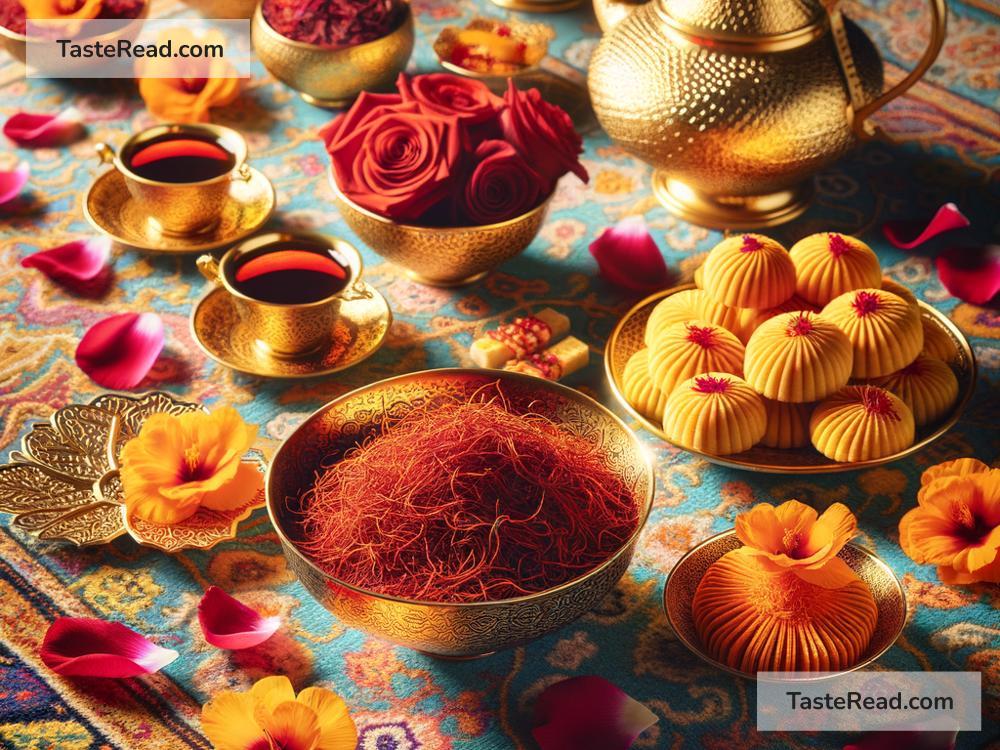The Fascinating History of Saffron in Persian Culture
Saffron, known as the “red gold,” is one of the world’s most precious spices. Its vibrant color, delicate aroma, and rich flavor make it a culinary treasure, but saffron is much more than a spice in Persian culture. For centuries, this magical thread has been a symbol of beauty, health, and prosperity, deeply woven into the fabric of Persian history and traditions.
What is Saffron?
Saffron comes from the Crocus sativus flower, and the spice is made from the bright red stigmas found within the flower. Each flower has only three tiny stigmas, and harvesting saffron is a labor-intensive process. Workers must hand-pick these delicate threads one by one. It takes approximately 150,000 flowers to produce just one kilogram of saffron!
Because of this painstaking process and its unique properties, saffron has always been highly valued. Iran (formerly known as Persia) is the world’s largest producer of saffron today, contributing nearly 90% of global production. Persian lands have been the heart of saffron cultivation for thousands of years.
Saffron’s Ancient Roots
The history of saffron in Persia dates back over 3,000 years. The earliest mentions of saffron are found in ancient Persian texts and artifacts. It is believed that the Achaemenid Empire (550–330 BCE) actively cultivated saffron to use in food, medicine, cosmetics, and rituals.
Saffron had a prominent role in Persian royal courts. Kings used saffron not only to flavor their feasts but also to dye their clothing. The bright, golden hue of saffron was considered luxurious and divine, making it suitable for royalty. Persian carpets, which are renowned worldwide, were often dyed with saffron, creating stunning designs that symbolized wealth and sophistication.
Saffron also played an important role in Persian religion and spirituality. Zoroastrian priests used saffron in their ceremonies and offerings. The spice was thought to have purifying and protective qualities, cleansing the soul and warding off evil spirits.
Saffron in Persian Medicine
For centuries, saffron has been celebrated in Persian medicine for its healing powers. Doctors and herbalists during the Middle Ages, including great Persian physicians like Avicenna (known as Ibn Sina), wrote extensively about saffron’s medicinal properties in their books. They believed that it could cure a wide range of ailments, from depression to digestion problems.
According to Persian traditional medicine, saffron is a warming spice, meaning it increases energy and vitality. It was often prescribed to lift people’s moods, improve blood circulation, and ease aches and pains. Today, scientific research supports many of these claims, showing that saffron has antioxidants and mood-enhancing properties, making it useful for treating stress and even mild depression.
Saffron in Persian Cuisine
If you’ve ever tasted Persian food, you know that saffron is an essential ingredient. Persian chefs have mastered the art of using saffron to create dishes that are rich in color, fragrance, and flavor.
One of the most famous Persian dishes that uses saffron is chelow kebab. This classic meal consists of perfectly grilled kebabs served with fragrant saffron rice. Another popular dish is zereshk polo, rice mixed with barberries and saffron, often accompanying chicken or lamb. Even Persian desserts like sholeh zard (saffron rice pudding) owe much of their appeal to saffron’s golden hue and distinct flavor.
In Persian tea culture, saffron is sometimes added to herbal teas, creating a soothing and aromatic experience. No matter where it is used, saffron elevates Persian cuisine, turning ordinary meals into artistic masterpieces.
A Symbol of Love and Celebration
Saffron is also deeply connected to Persian celebrations and traditions. During weddings, saffron is often used in drinks and dishes served to guests. It’s believed to bring happiness and good fortune to the newlyweds.
On Nowruz, the Persian New Year that marks the arrival of spring, saffron takes center stage in holiday meals. Families prepare special dishes with saffron to welcome the new year with joy and prosperity.
Additionally, saffron has long been associated with love and romance. In Persian poetry, especially works by great poets like Hafez and Rumi, saffron symbolizes beauty, passion, and harmony. Its presence in poems and art reflects its cherished status in Persian culture.
Saffron Today
Despite its ancient roots, saffron remains an important part of Persian life today. Iran’s Khorasan province, particularly the city of Mashhad, is known as the saffron capital of the world. Local farmers dedicate their lives to cultivating saffron, preserving the traditions that have been passed down for generations.
Saffron continues to be a source of pride for Iranians, serving as a reminder of their rich cultural heritage. Whether it’s sprinkled over food, used in traditional medicine, or admired for its beauty, saffron remains a timeless treasure in Persian culture.
Final Thoughts
Saffron truly is the “red gold” of Persia, reflecting the richness and beauty of Iranian history and traditions. From ancient rituals to modern cuisine, saffron has always held a special place in the hearts of the Persian people. It is more than a spice—it is a symbol of love, health, and prosperity.
As you enjoy saffron-infused dishes or admire its brilliant color, remember that you are experiencing a piece of history that stretches back thousands of years to the lands of ancient Persia. Truly, the story of saffron is a testament to the enduring legacy of Persian culture.


